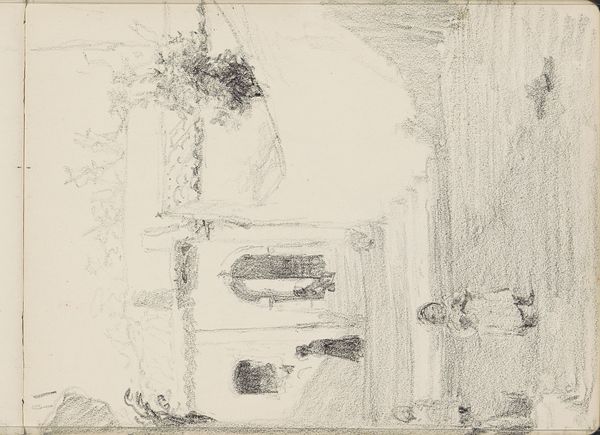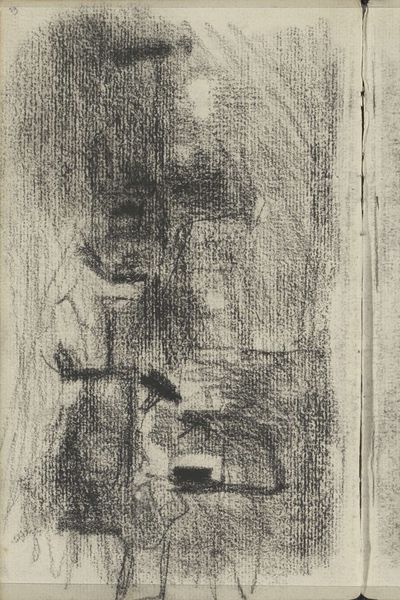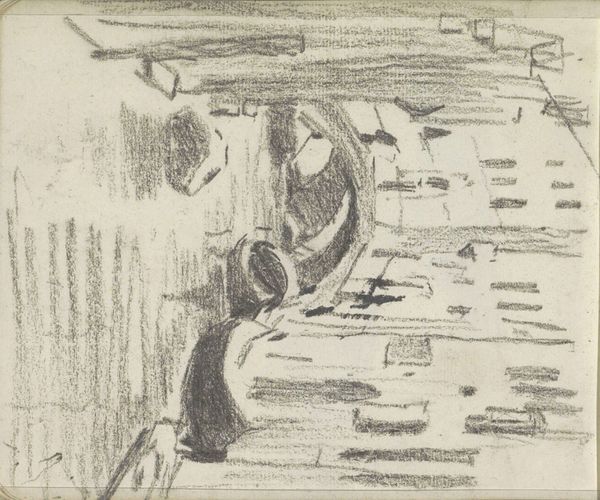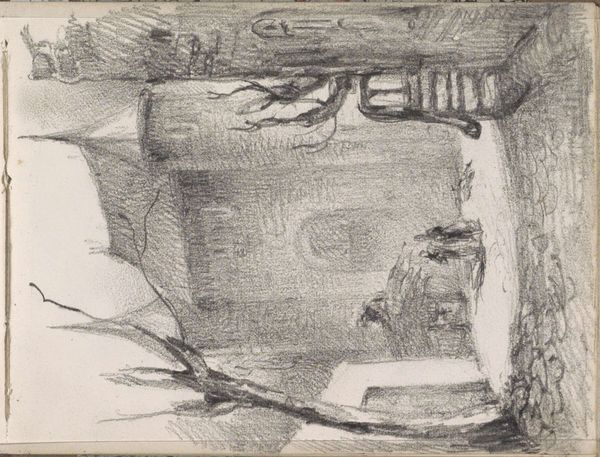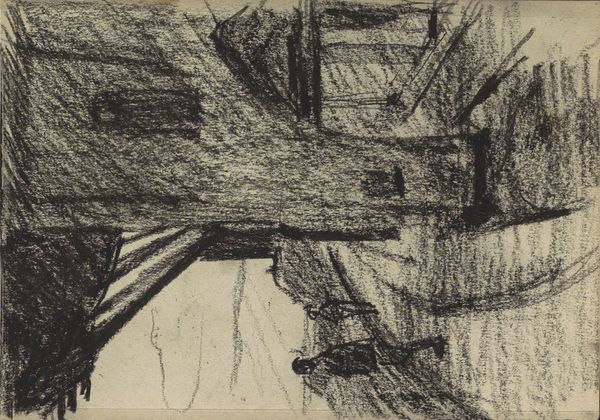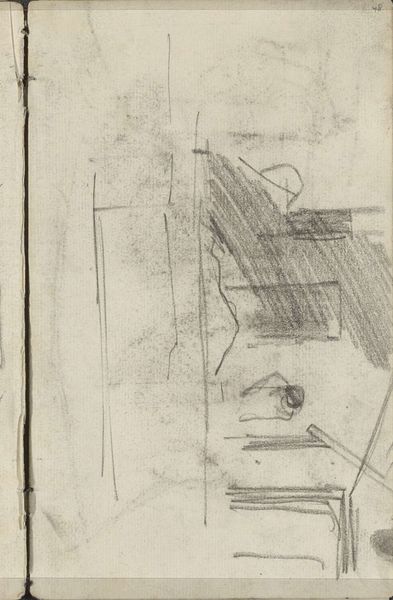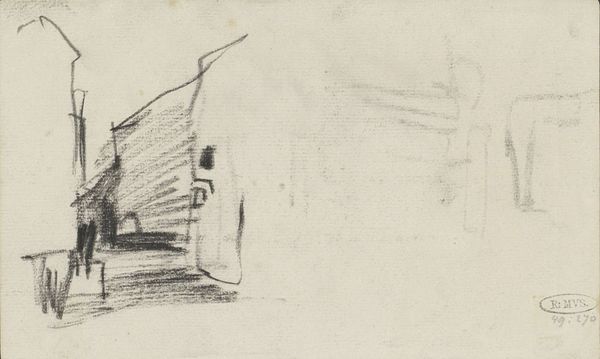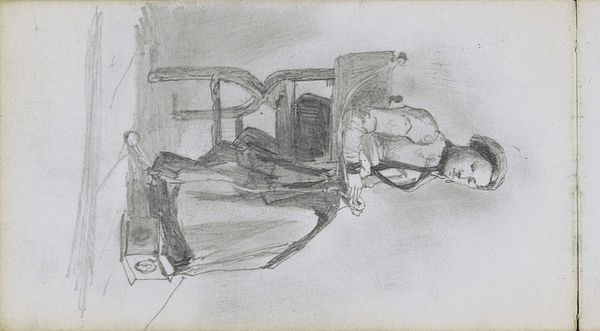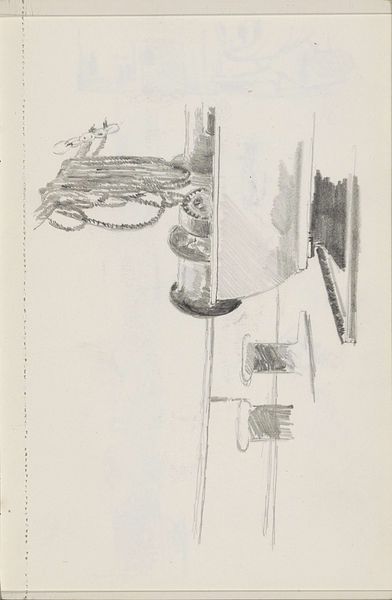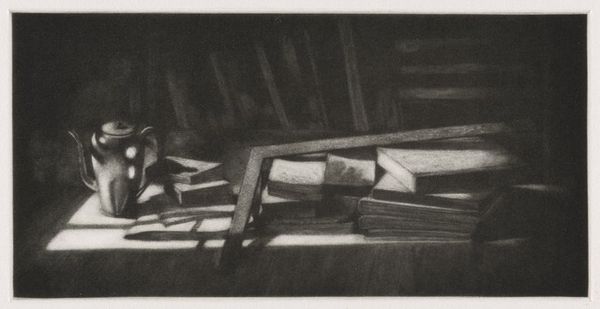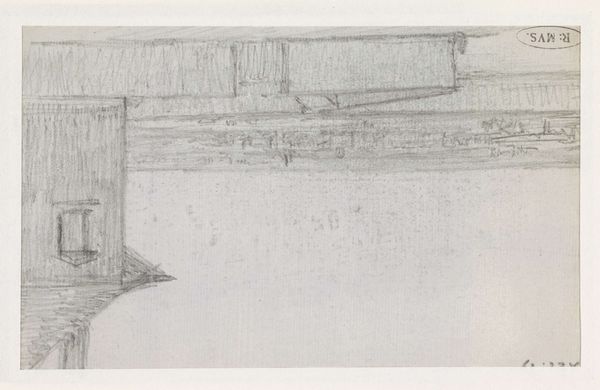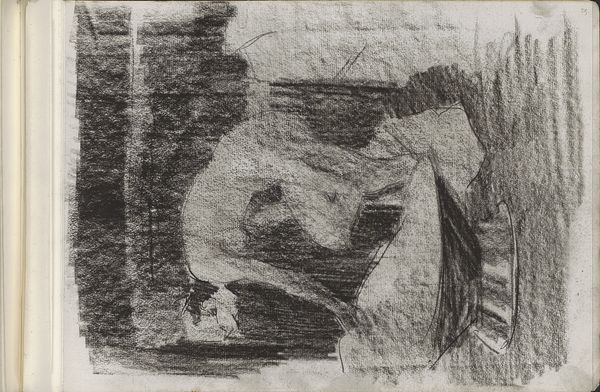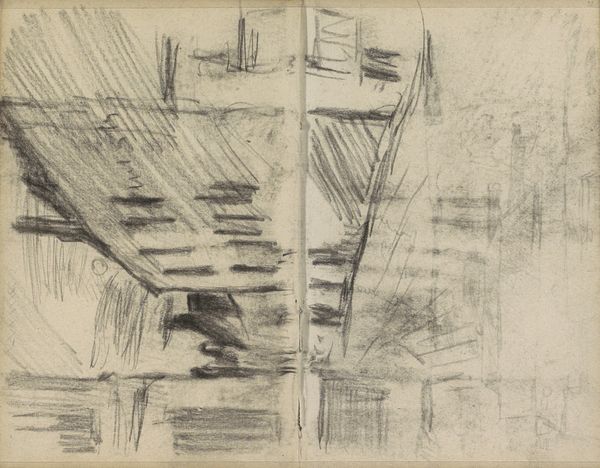
drawing, pencil
#
pencil drawn
#
drawing
#
pencil sketch
#
landscape
#
pencil drawing
#
pencil
#
street
Copyright: Rijks Museum: Open Domain
Editor: Here we have "Verlaten straat met een hoekhuis met balkon," or "Deserted Street with a Corner House and Balcony," a pencil drawing created sometime between 1865 and 1913, currently housed in the Rijksmuseum. It's such a simple sketch, almost ghostly. I’m curious – what do you see in this piece beyond the obvious architectural elements? Curator: This seemingly simple street scene speaks volumes about urban life during the period. We have to consider the implications of the title itself: *verlaten*, or deserted. Who is absent from this street, and why? Does it point towards broader socio-economic shifts at the time? For whom was the urban landscape accessible and who was denied access, even made invisible? Editor: That's interesting! I hadn't thought about the social implications of the "deserted" aspect. It gives the drawing a very different feeling. Curator: Precisely. Now, consider the lone balcony. What does it mean for a space meant for gathering to overlook an empty street? Does it signal isolation, failed promises of community, or the quiet lives of women behind closed doors? How does Hubrecht represent this intersection of public and private space? Editor: I see your point! It almost feels like a stage set, waiting for actors that will never arrive. What did Hubrecht intend to communicate about women or public/private spheres when producing this drawing? Curator: That's the crucial question, isn't it? Hubrecht was a woman artist navigating a male-dominated art world. To read her works through a feminist lens encourages conversations about social power dynamics and identity within visual culture. Do you think a male artist would consider a space of supposed gathering and focus his artistic skill in representing a moment of deserted street in town? Editor: I never thought about landscape art this way, or how much of its message stems from what’s absent, not just present. Thanks for sharing that perspective! Curator: Absolutely! It's about prompting ourselves to critically look beyond the aesthetic to uncover the cultural and power narratives embedded in seemingly quiet scenes.
Comments
No comments
Be the first to comment and join the conversation on the ultimate creative platform.
